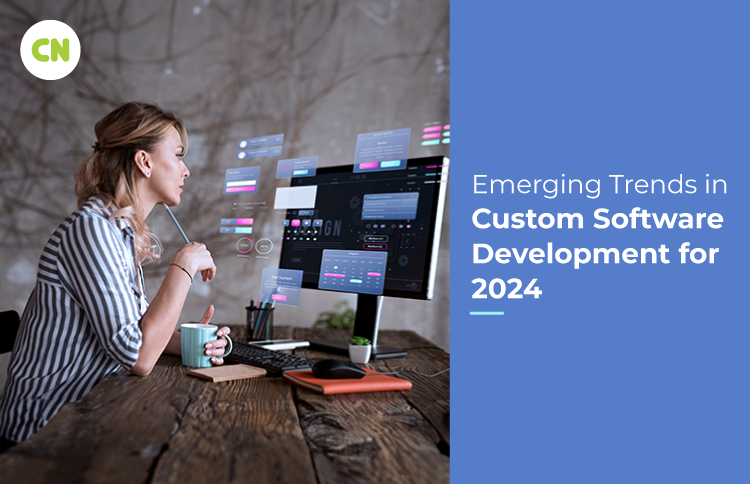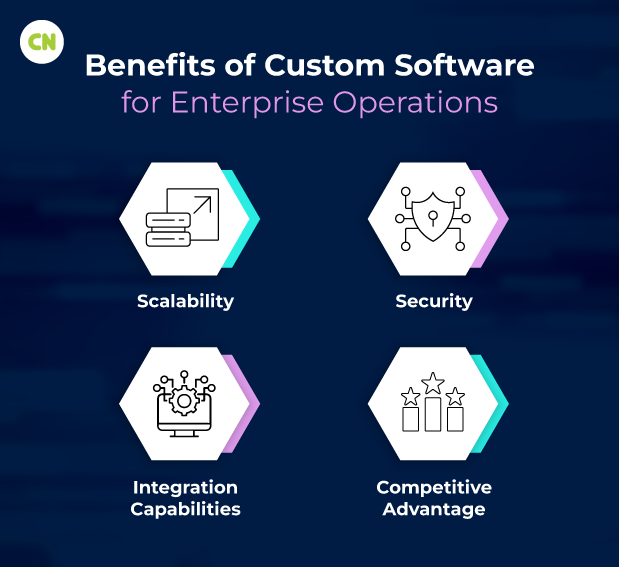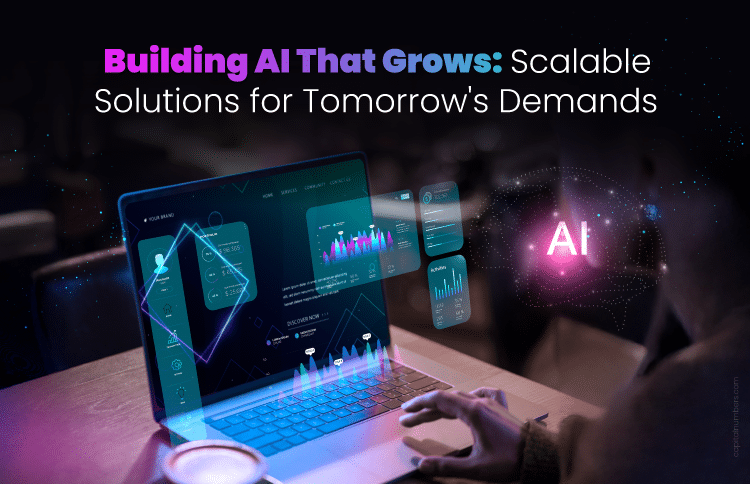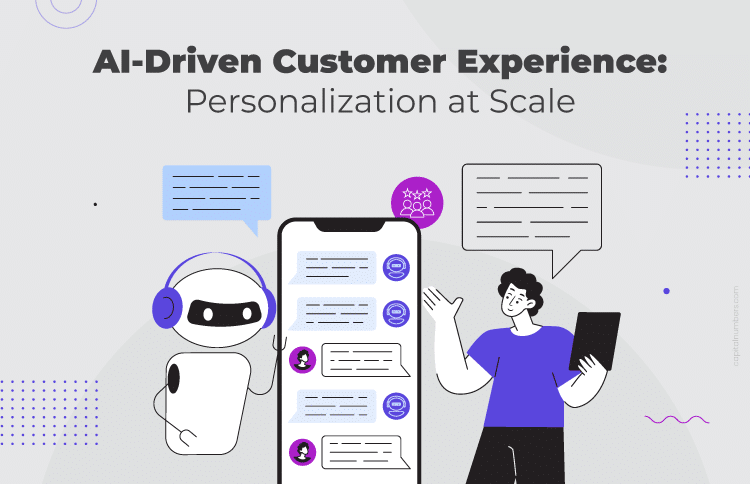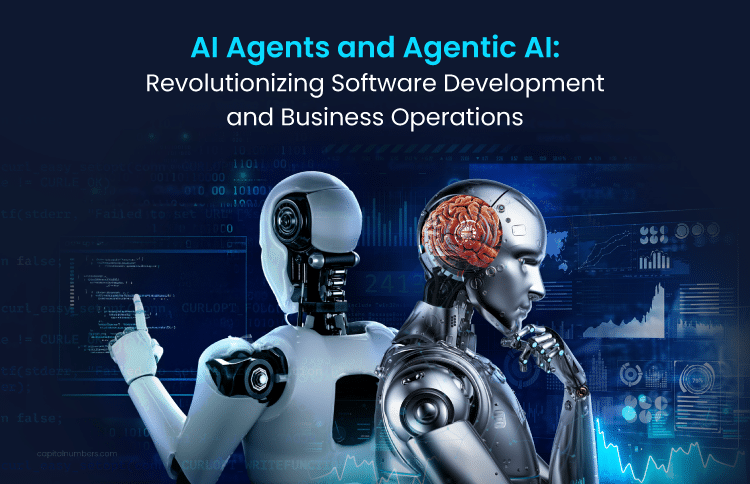Emerging Trends in Custom Software Development for 2024
Table of Contents
In the fast-changing custom software development industry, it’s essential for businesses and developers to stay updated to remain competitive and innovative. This field, known for its personalized solutions, is going through major changes due to new technologies and methods. Keeping up with these trends is vital for improving efficiency and seizing new opportunities. This blog will cover the key trends that are shaping custom software development services in 2024, including advancements in AI and machine learning, the growth of low-code platforms, and the heightened focus on cybersecurity. We’ll provide detailed insights and practical tips to help businesses and developers navigate these changes. Let’s explore these trends and their impact on the future of software development.
1 The Rise of AI and ML in Custom Software Development
Artificial Intelligence (AI) and Machine Learning (ML) are revolutionizing custom software development by enabling smarter, adaptive solutions that can analyze vast amounts of data and learn from it. These technologies are incorporated into software through various algorithms and models that allow applications to perform complex tasks, such as pattern recognition, natural language processing, and decision-making, without explicit programming for each step. The integration of AI and ML enhances the software’s ability to automate processes, personalize user interactions, and optimize operational efficiencies.
Future Projections for AI in Custom Software
Looking forward, the role of AI in custom software development is expected to grow significantly, particularly with advancements in deep learning and neural networks. Deep learning models, which mimic human brain functions, will enable even more sophisticated data analysis and decision-making capabilities. These technologies will allow custom software solutions to become more intuitive and capable of handling increasingly complex tasks, such as real-time language translation and advanced predictive analytics. As neural networks become more refined, they will also improve the adaptability and accuracy of AI applications across various industries, further driving the demand for custom AI-driven software solutions.
2 Increased Demand for Custom Enterprise Software Solutions
Large organizations are increasingly turning to custom software solutions to address unique challenges and streamline their operations. Unlike off-the-shelf software, bespoke software is tailored to fit the specific requirements of a business, ensuring that all aspects of the organization’s processes are aligned with its strategic goals. This customization allows companies to achieve greater efficiency and maintain a competitive edge by integrating unique features that cater to their operational needs and industry-specific demands.
Types of Custom Enterprise Software Solutions
- Enterprise Resource Planning (ERP) Systems: ERP systems are comprehensive software platforms that help businesses manage and integrate the essential parts of their operations. A custom ERP solution can include tailored modules for inventory management, supply chain operations, human resources, and finance, all designed to work together seamlessly. By developing custom ERP systems, organizations can ensure that the software reflects their unique workflows and practices, thus enhancing data visibility and operational control.
- Customer Relationship Management (CRM) Systems: Custom CRM systems are designed to manage a company’s interactions with current and potential customers. By developing a bespoke CRM solution, businesses can incorporate advanced features like automated marketing, personalized customer service tools, and detailed analytics that provide deep insights into customer behavior and preferences. These customized systems help in nurturing customer relationships more effectively and increasing sales efficiency.
Benefits of Custom Software for Enterprise Operations
Custom enterprise software solutions offer several significant advantages that help large organizations optimize their performance:
- Scalability: Custom software can grow with the company, accommodating increased loads and expanding functionalities without compromising performance. This adaptability ensures that businesses can continue to use their custom software as they scale, avoiding the need for frequent replacements or upgrades.
- Security: With cyber threats becoming more sophisticated, custom software provides enhanced security features tailored to the specific risks faced by an organization. Developers can build security protocols directly into the software’s architecture, focusing on protecting sensitive data and mitigating specific vulnerabilities unique to the business’s operations and industry.
- Integration Capabilities: Custom software can be designed to integrate seamlessly with other tools and systems already in use within the organization. This reduces data silos and enhances workflow efficiencies, ensuring that information flows smoothly across different departments and software platforms.
- Competitive Advantage: By leveraging software tailored to their precise needs, companies can implement innovative solutions that differentiate them from competitors who might only use generic software solutions.
3 The Shift Towards Low-Code and No-Code Platforms
Low-code and no-code development platforms represent a transformative shift in how software is built. These platforms allow users to create applications through graphical user interfaces and configuration instead of traditional hand-coded programming. Low-code platforms require minimal coding to set up applications, making them accessible to professional developers looking to speed up the development process. No-code platforms go a step further by enabling non-developers, such as business analysts and project managers, to build functional applications without any programming knowledge.
How These Platforms Impact Custom Software Development Services
The introduction of low-code and no-code platforms has significantly impacted the custom software development industry. These platforms have democratized the development process, allowing more users to participate in application creation and reducing reliance on specialized coding skills. They accelerate the development timeline by simplifying the design and deployment of applications, which can be particularly beneficial for businesses needing to rapidly adapt to market changes or internal demands.
- Efficiency and Speed: Low-code and no-code platforms streamline the development process by removing much of the repetitive coding tasks. This allows developers to focus more on the strategic aspects of application development like architecture and design, thus speeding up the delivery of projects.
- Cost Reduction: By accelerating the development process and reducing the need for experienced developers for every stage of software creation, these platforms can significantly lower development costs.
- Empowering Non-Developers: No-code platforms enable business users to directly create solutions that meet their needs without waiting for IT department schedules, fostering innovation and responsiveness within the organization.
The Limitations of Low-Code/No-Code Solutions
- Limited Customization and Control: While they offer rapid development, low-code and no-code platforms may not provide the level of customization that some advanced projects require. The simplicity of these platforms often comes at the cost of reduced flexibility compared to traditional development.
- Performance Issues: Applications built on low-code/no-code platforms might not perform as efficiently as those developed from scratch, particularly for complex computations or large-scale data processing.
- Dependence on Vendors: Using these platforms can lock companies into specific vendors, making it difficult to migrate to another platform or customize beyond the capabilities provided by the existing tools.
4 Emphasis on Software as a Service (SaaS)
Software as a Service (SaaS) is a software distribution model where applications are hosted by a third-party provider and made available to customers over the internet. This model allows users to access software on a subscription basis without the need for internal infrastructure or hardware, significantly lowering the entry barriers for using advanced software. In the realm of custom software development, SaaS is increasingly prevalent as it offers tailored solutions that are scalable, easy to update, and require less upfront investment than traditional software installations.
Custom Software Agencies Developing Niche Market SaaS Applications
Custom software development agencies are leveraging the SaaS model to cater to specific industry needs and niche markets, providing solutions that are not only highly specialized but also more accessible and cost-effective. For instance:
- Healthcare Sector: Agencies develop custom SaaS platforms to handle patient management systems that comply with local regulations and integrate seamlessly with existing healthcare infrastructures.
- Retail and eCommerce: Tailored SaaS solutions in these sectors might focus on supply chain management, customer relationship management (CRM), or advanced analytics for improving sales strategies.
- Financial Services: Custom SaaS applications for finance might include features for risk management, regulatory compliance, or automated trading systems.
These specialized applications allow organizations in niche markets to adopt powerful, industry-specific tools without the heavy investment typically associated with bespoke software.
5 The Integration of IoT Technology
The Internet of Things (IoT) refers to the network of physical objects — “things” — that are embedded with sensors, software, and other technologies for the purpose of connecting and exchanging data with other devices and systems over the internet. In custom software development, IoT technology is increasingly significant as it allows for the creation of highly interactive and responsive environments. By integrating IoT, custom software can utilize real-time data from numerous sources, enhancing decision-making processes and operational efficiencies across various sectors.
Examples of IoT Applications in Industries
- Healthcare: IoT devices in healthcare, such as wearable health monitors and smart beds, collect vital data which custom software uses to enhance patient care. This includes monitoring patient health metrics in real-time and adjusting treatments based on data-driven insights.
- Manufacturing: In manufacturing, IoT devices are critical for predictive maintenance, supply chain management, and inventory control. Sensors on equipment can predict failures before they occur, and IoT-driven logistics solutions can automate and streamline warehouse operations.
- Smart Homes: IoT technology in smart homes allows for the automation of various home systems, including lighting, heating, and security. Custom software can integrate these systems into single interfaces, providing homeowners with easy control and monitoring capabilities, enhancing both convenience and energy efficiency.
Challenges and Considerations When Integrating IoT Technology
Integrating IoT technology presents unique challenges and considerations for custom software developers
- Security and Privacy Concerns: As IoT devices often collect and transmit sensitive data, ensuring robust security and privacy measures is paramount. Developers must implement advanced security protocols and encryption methods to protect data from unauthorized access and breaches.
- Interoperability and Standards: With a myriad of IoT devices and systems available, ensuring they work together seamlessly is a challenge. Developers need to consider device compatibility and adhere to industry standards for communication protocols and data formats.
- Scalability: IoT solutions must be designed to scale efficiently as the number of connected devices grows. This requires robust backend architecture that can handle increased loads and complex data flows without degradation in performance.
- Data Management and Analysis: IoT applications generate vast amounts of data that must be effectively managed and analyzed. Developers must implement powerful data processing and analytics capabilities to derive meaningful insights from the data collected by IoT devices.
6 Advancements in Cybersecurity for Custom Software
Cybersecurity is fundamental in custom software development, as these solutions often handle sensitive data and are integral to business operations. The rising incidence of cyber threats makes robust cybersecurity measures essential, not only to protect data but also to maintain user trust and comply with regulatory requirements. Effective cybersecurity in custom software helps prevent data breaches, ensures data integrity, and safeguards the continuity of business operations.
Latest Trends and Technologies in Securing Custom Software
- Blockchain Technology: Blockchain is increasingly being used in custom software development for its superior security features. By decentralizing data storage, blockchain technology eliminates single points of failure, making it extremely difficult for attackers to manipulate data. It also provides transparency in transactions, which is ideal for applications requiring audit trails, such as in finance and supply chain management.
- Advanced Encryption Techniques: Encryption remains a cornerstone of cybersecurity. Advanced encryption standards, such as AES-256, are now commonplace in custom software development. Newer approaches, such as homomorphic encryption, allow data to be processed while still encrypted, providing an additional layer of security by ensuring data remains protected even during use.
- AI-Driven Security Measures: Artificial intelligence (AI) is being used to enhance cybersecurity in custom software through predictive algorithms that detect and respond to potential threats in real-time. AI can analyze patterns and predict attacks before they happen, enabling proactive defense measures.
Enhancing Cybersecurity in Custom Software Development
Custom software development companies are adopting a variety of strategies to improve their cybersecurity frameworks:
- Regular Security Audits and Compliance Checks: Companies are conducting regular security audits to ensure their software and practices comply with the latest security standards and regulations. This includes GDPR compliance for data protection, HIPAA compliance in healthcare software, and PCI DSS compliance for software handling credit card transactions.
- DevSecOps Integration: The integration of security into the DevOps process, known as DevSecOps, is becoming a standard practice. This approach embeds security measures early in the development cycle, ensuring that security considerations are built into the software from the ground up rather than being added in patches or as afterthoughts.
- Continuous Education and Training: Recognizing that human error can often lead to security breaches, companies are investing in continuous education and training for their developers and staff. This includes training on the latest cybersecurity threats, safe coding practices, and security tools.
- Implementation of Multi-Factor Authentication (MFA): To enhance security further, custom software often incorporates multi-factor authentication, requiring users to provide two or more verification factors to gain access to the system, significantly reducing the risk of unauthorized access.
7 The Adoption of Agile and DevOps Methodologies
Agile and DevOps methodologies have significantly transformed custom software development by promoting flexibility, efficiency, and collaboration.
- Agile Methodology: Agile is a project management philosophy that focuses on continuous improvement, flexibility, input from the team, and delivering essential quality products. Agile methodologies, such as Scrum and Kanban, emphasize iterative development, where requirements and solutions evolve through collaboration between self-organizing cross-functional teams.
- DevOps Practices: DevOps is a set of practices that combines software development (Dev) and IT operations (Ops), aiming to shorten the development life cycle and provide continuous delivery with high software quality. DevOps integrates developers and operations teams to improve collaboration and productivity by automating infrastructure, workflows, and continuously measuring application performance.
Benefits of Agile and DevOps Methodologies
- Faster Deployment: Both Agile and DevOps enable more frequent releases of software, allowing businesses to react quickly to market changes. This rapid deployment cycle ensures that updates are delivered to users faster and more frequently, which is vital in today’s fast-paced market environment.
- Improved Collaboration: Agile encourages active collaboration among stakeholders, including developers, managers, and customers. DevOps extends this collaboration to the operations team, ensuring that the deployment and maintenance phases are considered during the development process itself, leading to fewer silos and a unified focus on the end product.
- Increased Efficiency and Quality: Agile’s focus on iterative testing and feedback leads to higher quality outcomes, as issues are identified and resolved quickly. DevOps enhances this by automating many aspects of the software delivery process, such as testing and deployment, which not only speeds up workflows but also reduces human error.
8 Focus on User Experience (UX) Design
User Experience (UX) design is a critical component in custom software development, focusing on the usability, accessibility, and overall satisfaction of users while interacting with software products. UX design goes beyond aesthetic aspects, involving a deep understanding of users’ needs and behaviors to create intuitive and efficient interfaces. In custom software, where solutions are specifically tailored to meet unique business needs, UX design plays an essential role in ensuring that the software not only functions effectively but also delivers a seamless and engaging experience to its users.
Emerging Trends in UX Design
- Voice User Interfaces (VUIs): As voice technology advances, VUIs are becoming more common in custom software, allowing users to interact with applications through voice commands. This trend is particularly influential in accessibility, making software easier to use for individuals with disabilities or those in situations where hands-free operation is preferable.
- Augmented Reality (AR) and Virtual Reality (VR): AR and VR technologies are being integrated into UX design to provide immersive experiences that enhance user engagement and understanding. In industries like real estate and education, custom software incorporating AR and VR can offer interactive and lifelike experiences that improve user satisfaction and learning outcomes.
- Artificial Intelligence (AI) in Design: AI tools are increasingly used in UX design to automate tasks such as user testing and layout design, enabling designers to focus on more strategic elements of UX. AI also helps in personalizing user experiences by analyzing user data and adapting interfaces to meet individual preferences.
9 Sustainability and Green Software Development
Sustainability in software development, often referred to as “green software development,” has become increasingly important as the tech industry seeks to reduce its environmental impact. This approach involves designing software and systems with a focus on minimizing energy consumption and environmental footprints. As awareness of climate change grows, both clients and developers are prioritizing sustainability not only as a corporate responsibility but also as a component of innovation and long-term viability in software development.
Incorporating Sustainability in Custom Software Development
- Energy-Efficient Coding Practices: Developers are adopting more energy-efficient coding practices that require less processing power and, consequently, consume less energy. This includes optimizing algorithms for better performance and integrating energy-saving features within the software.
- Cloud-Based Solutions: By leveraging cloud services, custom software developers can reduce the need for physical infrastructure and the associated energy costs. Cloud providers typically optimize their data centers for energy efficiency at scale, which smaller companies cannot often match in-house.
- Use of Open Source Software: Utilizing open source software can contribute to sustainability. It allows developers to build upon previously created codes, reducing the need for additional resources and energy that would have been expended in developing new software from scratch.
- Remote Work and Virtualization: Encouraging remote work reduces the carbon footprint associated with commuting. Moreover, virtualization technologies allow for fewer physical servers to host multiple environments, significantly reducing energy consumption and equipment use.
Conclusion
Throughout this blog, we’ve explored key trends in custom software development for 2024, including AI integration, the rise of SaaS, the adoption of low-code platforms, and a focus on sustainability. These developments are crucial for businesses aiming to enhance efficiency and stay competitive. Adapting to these trends allows companies to use cutting-edge technologies and methodologies, encouraging innovation and growth.
If you’re looking to drive your business forward, consider consulting with a custom software development company to explore potential projects tailored to your needs. This collaboration can help you utilize the latest technologies to enhance efficiency and stay competitive in your industry.

